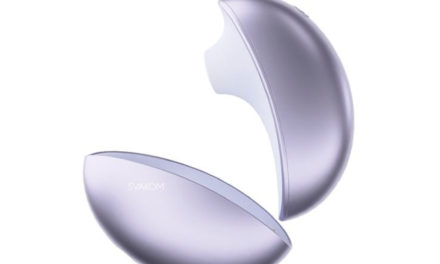Pass the eye drops, please.
Arguably, the only thing worse than drinking a watery cup of coffee is, well, having to start the day with no coffee at all. We’ve all been there: You’re down to the very last beans, unsure of whether or not you can get away with brewing another cup before making a mad dash to the store.
But according to Maciej Kasperowicz, a Q grader (a trained and licensed coffee evaluator—a “coffee sommelier,” if you will) and the director of coffee at Trade Coffee, getting down to the scraps isn’t as worrisome as you may think; he’s actually kind of cool beans with it. That’s because if you play around with a few things—like coffee-to-water ratios, grind size, and brewing method—you can easily make a cup of coffee stronger (or weaker, if you so please) without adding extra grounds.
What determines the strength of a cup of joe?
Whether it’s espresso, drip, or cold brew, at its simplest, a coffee beverage is made up of two things: water and the coffee particles you’ve managed to pull out of your beans, Kasperowicz says.
“When we say ‘strength’ in the industry, what we specifically mean is the percentage of your drink that’s made up of those coffee particles,” Kasperowicz says. In other words, the strength of coffee depends on how much water you use and how well you’re able to extract the coffee depending on the brewing method you go with.
4 ways to make coffee stronger (or weaker) without adding extra grounds
1. Adjust the coffee-to-water ratio
When making a cup of coffee stronger (or weaker), one of the main things you want to focus on is the coffee-to-water ratio. “The factor that impacts the strength of the brew the most is, by far, the ratio of coffee grounds to water in your recipe. If you bring a new coffee machine home and make a cup of coffee that’s too weak, the easiest way to fix that is to use either more coffee or less water,” Kasperowicz says.
But when you’ve used up the last bit of coffee grounds, cutting back on the water is the way to go and your best bet in achieving a good-tasting cup. This helps ensure your cup is as strong as possible, while working with what you’ve got. “It’s like any recipe: If you put more of a thing into it, it’ll taste more like that thing. You put more coffee grounds into a coffee recipe, it’ll taste more like coffee,” Kasperowicz says.
2. Play around with the brewing time
According to Kasperowicz, coffee-to-water ratio isn’t the only thing that can impact your cup’s strength. “There are many decisions that we make while brewing that impact how much you’re getting out of the coffee and into your cup,” he says. Another way depends on brewing times.
“If you extend your brew time for longer—easier said than done with a Mr. Coffee, but very possible with a French press—you’ll get more of that brown stuff out of the coffee grounds and into your cup,” he explains. The opposite is true; shorter brewing time will equate to a weaker cup.
Of course, this will all depend on the type of beans used and brewing method. As such, the best way to determine the optimal brewing time is by simply testing it out as you go until you find the sweet spot for your setup.
3. Raise or lower the water temperature
If a stronger cup is the goal, Kasperowicz recommends raising the temperature of the water. “All other things being equal, hotter water will also extract more out of your coffee. This is why cold brew takes so long [to extract],” he says. But keep in mind that hotter temperatures can also affect the coffee’s flavor, acidity, bitterness, and even caffeine content, as its extraction is much more forceful.
4. Adjust the grind size
One universal method for increasing or lowering coffee strength is by adjusting the grind size. “In almost all cases, grinding finer will extract more and increase the strength, and that’s an adjustment you can make across all brew methods,” Kasperowicz says. This is due to the increased surface area that allows water to filter through more easily. “Water has to approach every coffee particle from the outside in, so the more surface area you have available, the easier it is for the water to get that tasty brown stuff from the grind into your cup,” Kasperowicz explains.
To help visualize it, imagine cutting a bean in half and noting the increased surface area water can now penetrate. “Think about one coffee bean and the water coming into contact with it. Then cut that bean in half. You have the same amount of coffee, but the water now has more access to the inside. Grinding finer is basically repeating that process over and over,” Kasperowicz says.
Why you shouldn’t use less coffee grounds all the time
Coffee’s expensive; we know. Even though extracting as much as you can from beans is great when in a pinch, it’s not always foolproof, Kasperowicz says. “The one complicating factor—and the reason we’re not all just going for maximum coffee extraction to get the most bang for our bucks out of every bean—is that different compounds come out of those grinds at different rates, and the bitter compounds are often the hardest to get out,” he says.
Bottom line: Yes, grinding beans as finely as possible and brewing them for a long time can yield a stronger cup, or achieve the same “strength” as you would using less coffee, but Kasperowicz says it comes at a cost. “It might taste overwhelmingly bitter, instead of balanced and delicious,” he says.
An RD shares the benefits of coffee:
Recommended Story For You :

The alpine secret for healthy weight loss

The Most Potent Fast-Acting Formula For Incinerating Stubborn Fat

Real Cortexi Users Real Life‑Changing Results

This Cold Drink Might Trigger Your Prostate

Red Boost is a powerful new formula for boosting male sexual health.

Everything you eat or drink eventually reaches your liver for processing.

Brand New Probiotics Specially Designed For The Health Of Your Teeth And Gums

Empowering You to Take Control of Your Blood Sugar Health!

Scientists Finally Discover the Root Cause of Belly Fat and Unexplained Weight Gain







